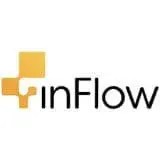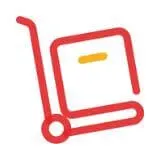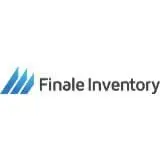- Free Version: Available for teams of up to 10
- Pricing: Premium plan $24/month (with free 30-day trial period)
- Platforms supported: Available on mobile app (iOS and Android) or a web-based software
Why Use SafetyCulture?
SafetyCulture allows businesses to track their inventory levels, create reports, and manage their stock from one central location. The app is designed to make the inventory management process efficient and straightforward for businesses. Since it is hosted in the cloud, it may be accessed from any computer or mobile device. SafetyCulture is the perfect tool for businesses to streamline their inventory management process and save time.
How to Use SafetyCulture as Your Inventory Management App:
- Convert an existing paper checklist or create one from scratch.
- You can now use your digital form anywhere using your mobile phone or tablet even while offline. You can also distribute the form to the appropriate personnel through the SafetyCulture form app.
- Once completed, the data from the digital form is automatically uploaded to the cloud to serve as your backup. If your inspection or assessment was done offline, the data will automatically sync the next time you connect to the internet.
- You can generate digital reports of your completed forms even while offline. These reports can also be exported in various formats and distributed automatically to selected personnel once a template is completed.
- Lastly, SafetyCulture form builder can be integrated with external Business Intelligence tools such as Tableau, Power BI, and Excel Online to automate your workflow each time a form is completed.
Features:
- Real-time tracking of inventory items
- Creation of customized reports
- Use of pre-made inventory templates
- Stock management from one central location
- Accessible on any desktop or mobile device
- Cloud-based for easy access anywhere
- Offline mode record-keeping capabilities
Why Use InFlow?
InFlow Inventory app is a powerful and easy-to-use software system that helps businesses keep track of their inventory levels. InFlow Inventory includes various tools that simplify inventory management, such as creating buy orders, establishing reorder points, and tracking sales data, giving businesses complete control over their inventory.
Features:
- Track physical and virtual inventory items
- Get real-time information on inventory levels
- Create purchase orders and set order points
- Free Version: Not available
- Pricing: Starts at $89 for up to 2 members per month (with a 14-day free trial)
- Platforms supported: Web, iOS, and Android
Why Use QuickBooks Commerce?
Formerly TradeGecko, QuickBooks Commerce is a cloud-based inventory management software that streamlines operations, from purchasing and manufacturing to fulfillment and sales. It helps companies manage every aspect of their business in one place. QuickBooks Commerce provides insights and resources to simplify operations, from product and supplier management to inventory control and order fulfillment.
Features:
- Comprehensive product and supplier management
- Powerful inventory control features
- Streamlined order fulfillment process
- Free Version: Not available
- Pricing: Starts at $30, 50% off for the first 3 months (with a 30-day free trial)
- Platforms supported: Web, iOS, and Android
Why Use Zoho?
Zoho Inventory app is a powerful tool that will help to increase your sales and keep track of every unit in your inventory. It is an all-in-one inventory management solution that helps businesses streamline their operations, optimize their stock levels, and boost their bottom line. This app is best for small- to medium-sized e-commerce businesses.
Features:
- Centralized inventory across all selling channels
- Support for item kitting
- Low stock notifications and automatic reordering
- Free Version: Yes, up to 2 users
- Pricing: Paid plan starts at $59/month (with a 14-day free trial)
- Platforms supported: Web, iOS, and Android
Why Use Finale Inventory?
Finale Inventory provides a multi-channel, cloud-based inventory management software designed for high-volume eCommerce industries. Finale’s inventory management software is used by some of the largest online retailers in the world.
Features:
- Support for kitting/bundles
- Automatic repurchase and serial number tracking
- Integrations with leading e-commerce platforms
- Free Version: Not available
- Pricing: Starts at $75/month (with a 14-day trial)
- Platforms supported: Web and mobile devices
Why Use Sortly?
Sortly is an inventory management software that can help you keep track of your stock levels. With Sortly, you can create an inventory of your products, set reorder thresholds, and track your sales. The data can help you make better decisions about your inventory levels and ultimately save money. In addition, Sortly’s mobile app makes it easy to keep track of your inventory when you’re on the go.
Features:
- Dynamic inventory forecasting tools
- Integrations with major sales channels and shipping carriers
- Advanced inventory tracking and control
- Free Version: Yes, with limited features
- Pricing: Advanced Plan starts at $29 per month, billed annually (with 14-day free trial)
- Platforms supported: Web, iOS, and Android
Why Use Shopify?
Shopify is an e-commerce platform that allows users to list their products and services online. This virtual storefront can help you build your brand and manage your product listings more efficiently. Shopify enables freedom and flexibility for business owners while offering features such as an inventory of available products and a summary of fulfilled orders.
Features:
- All-in-one e-commerce platform
- Unlimited product listings
- Inventory tracking
- Free Version: Not available
- Pricing: Basic plan starts at $19/month (with a 3-day free trial)
- Platforms supported: Web, iOS, and Android
Why Use Square Inventory?
Square Inventory is part of the Square software suite, which offers an ample amount of inventory management capabilities. It works best when it’s integrated with the main software and used as an entire system. This software works best for the retail and restaurant industry. Examples are food trucks and mobile businesses that need an on-the-go POS and inventory system.
Features:
- Web platform
- Streamlined interface
- Bulk download of inventory reports
- Free Version: Using the inventory management feature is free, however, every successful customer transaction has a fee
- Pricing: Paid plan starts at $29/month
- Platforms supported: Web, iOS, and Android
Why Use Lightspeed?
Lightspeed, merged with Shopkeep, is a complete POS system that features an inventory management feature. The items in inventory can be organized per department, category, and supplier, which helps save time and prevents issues with the product. This software is an excellent option for any business needing a POS system to handle stock inventory.
Features:
- Bulk SKU importation
- Privacy of sensitive inventory data
- Inventory value reporting
- Free Version: Not available
- Pricing: Lean Plan starts at $119 per month, billed annually (with free trial)
- Platforms supported: Web, Windows
Why Use Odoo?
Odoo enables users to select which applications they need with their system. It eliminates the need to integrate external applications, unlike the previous inventory management options. This is the perfect option for businesses that want to pick which apps to include with the inventory management app to create an all-in-one system that addresses specific business needs.
Features:
- Double-entry inventory
- Inventory adjustments and valuation
- Stock transfers and replenishments
- Free Version: Free for one app
- Pricing: Paid plan starts at $7.25 per user/month
- Platforms supported: Web, iOS, and Android
What is an Inventory Management App?
An inventory management app is a digital tool used by inventory managers to ensure that stocks, raw materials, and supplies are sufficient to meet production and consumer demands. Also referred to as inventory management software, a good inventory management app should generate detailed reports, showcase data analytics, and help users leverage the two to gain actionable business insights for effective decision-making.
Importance of Using an Inventory Management App
The value of inventory is integral to any goods-based business. It helps prevent operational issues such as stockouts, overstocking, and any other issues that can contribute to business loss or failure. Having a proper inventory management app can benefit the business in many ways, such as:
- Effective inventory control
- Better inventory planning and ordering
- Better customer service
- Reduce product loss from theft, spoilage and returns
- Gain better insight on financial standing, customer behaviors and preferences, product and business opportunities, trends and more.
Mobile applications such as inventory management apps can help with inventory-related tasks by providing ease of access and showing changes in real time, empowering people to work more efficiently. Using a handheld device helps to capture photo evidence and assign corrective actions immediately to avoid overproduction, product spoilage, or inadequate supplies.
Choosing the Right Inventory Management Software
Different factors should be considered before deciding which inventory management software best fits your business. Think about the features you may need, the price, and also your business size.
Features
The features common among the apps in the list include:
- stock notifications;
- Integrations;
- ability to create unique barcode/QR;
- and order trackers.
Exclusive features, such as ones for enterprise or higher-tier accounts, include support for large-scale inventory, multiple locations, and high security.
Pricing and Cost
Depending on the features, the average pricing for inventory management software ranges from $10 per user per month to $500 for a lifetime license. Licenses only give the right to use the software, not ownership, limiting the user to the specified terms and conditions.
Generally, inventory management software is priced based on the number of:
- Iicenses;
- users;
- product listings (SKUs), stocks, and raw materials;
- fulfilled orders;
- Iocations (branches of facilities, warehouses, factories); and
- devices used.
Business Size
To choose the right inventory management system, you also have to consider the size of your teams. Here are some suggestions for what inventory management system to choose based on company size:
Small – This business size should consider free inventory management applications first since most offer free features that fit small businesses. Companies that fall under this category can easily choose and switch between applications.
Medium – Considered the “in-between business size,” this business size can benefit from features offered by most inventory management software. The problem is choosing which software to use and what price point is fair. A great way to do so is to choose software that offers free trials of their premium accounts.
Large – Software solutions that offer enterprise accounts should be the main consideration in choosing an inventory management system for a company this size. It’s also important to check if the software offers full flexibility, customization, and support.










